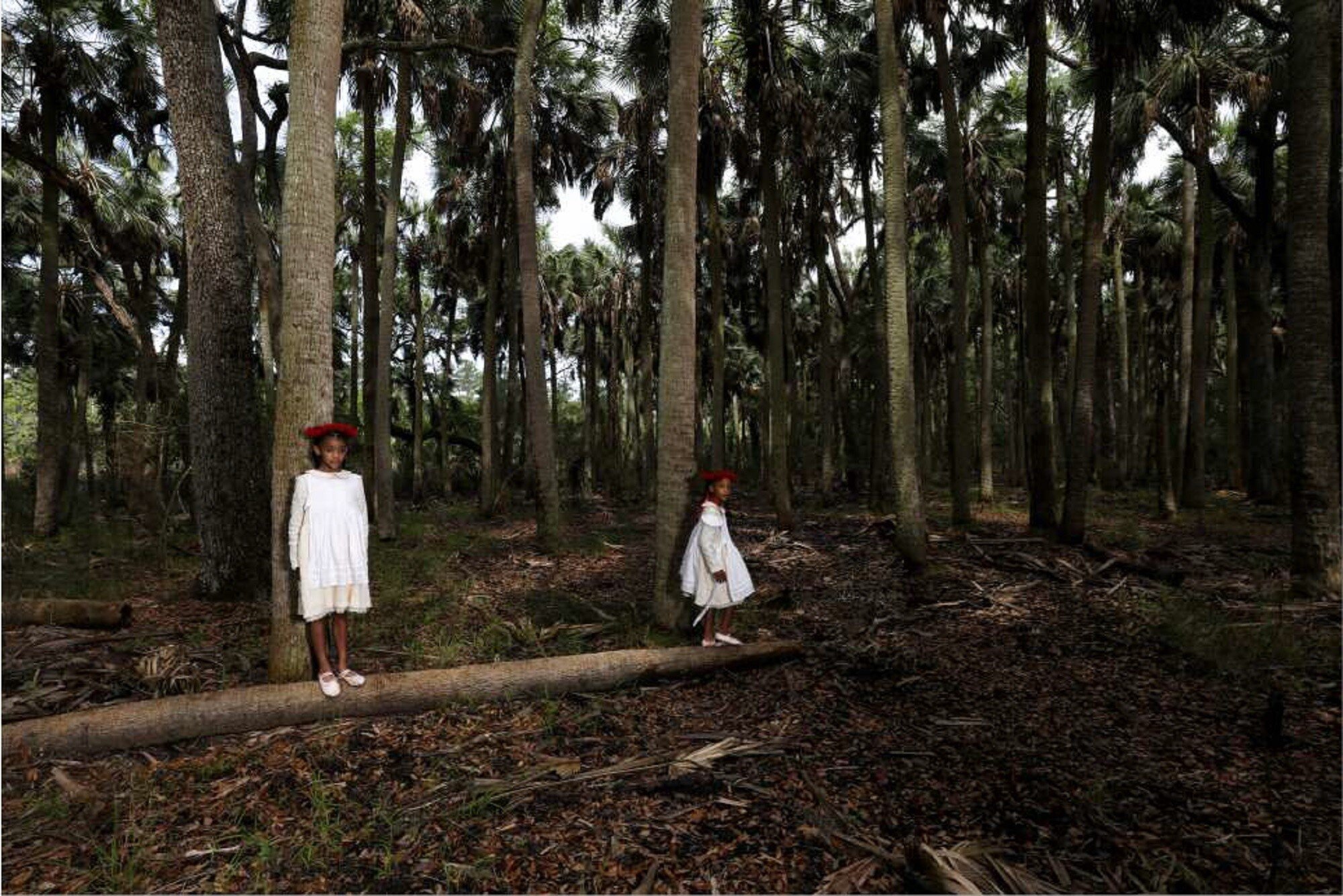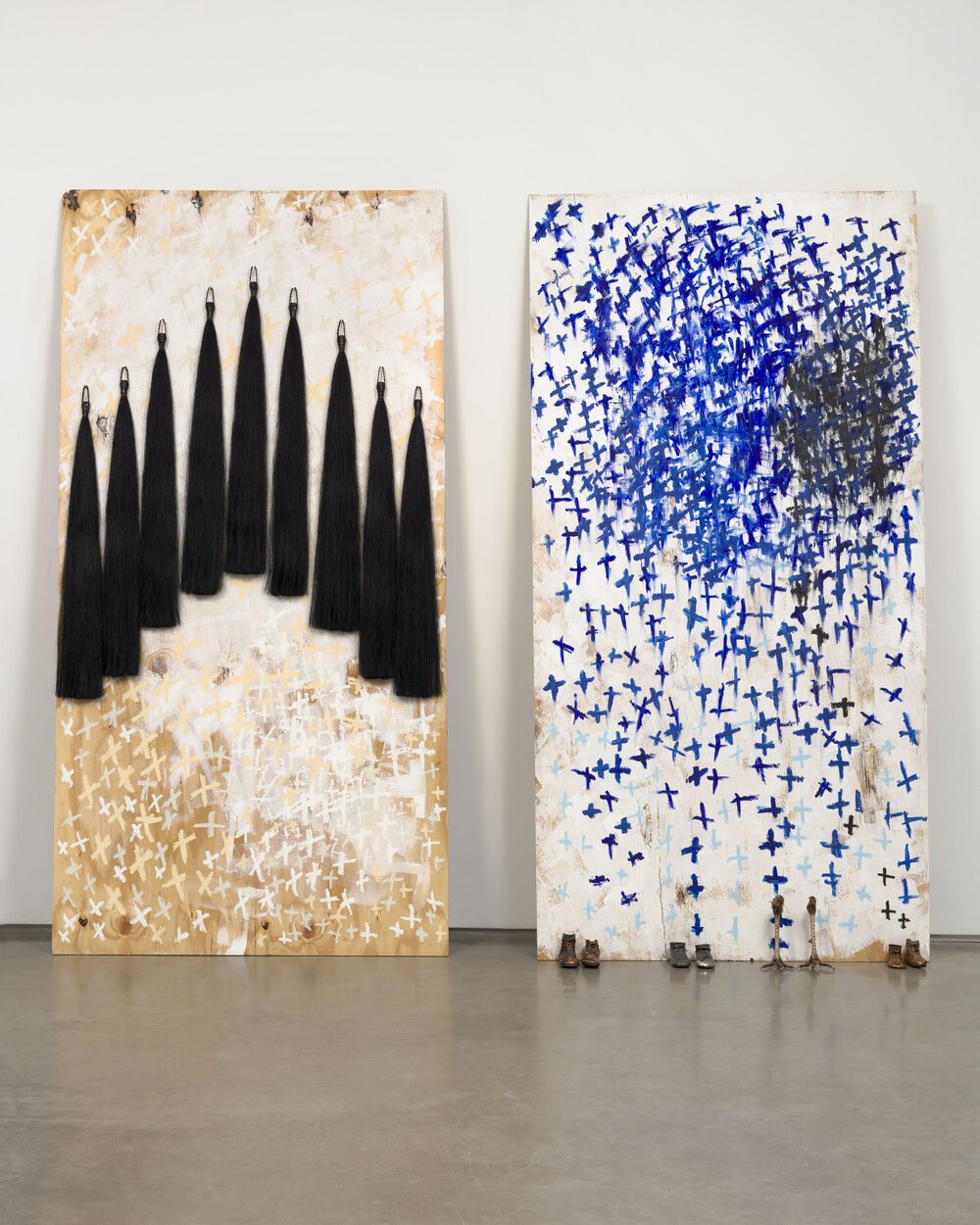Allison Janae Hamilton's World of Memory and Myth
Sisters, Wakulla County, FL, (2019)
My introduction to Allison Janae Hamilton's art occurred during a pivotal moment, The final days of the Studio Museum in Harlem's historic location. Her installation "Foresta" immediately captivated me, transforming a modest space into a rich tableau of elegant taxidermy, tambourines, and haunting stick figures in dialogue with video work that evoked a profound sense of home. As someone raised in the South with a deep appreciation for history, I recognized the landscapes in Hamilton's work. they resonated with me on a visceral, almost ancestral level.
Foresta , (installation view) Installed at the Studio Museum in Harlem, (September 2017 - January 2018).
Hamilton's artistic practice confronts how forgotten historical moments continue to shape our present reality. "I am trying to situate today in a longer context, in a continuum," she explains, creating powerful testimonials for voices systematically silenced both historically and in contemporary discourse.
For her contribution to MOOD, the Studio Museum's 2019 Residency program housed at MoMA PS1, Hamilton orchestrated a multisensory experience through carefully crafted videos, sculptures, and photographs that explored intersecting themes of freedom, spirituality, and community. Walking through the installation, I was drawn by the sound of rushing water toward a corridor marked by platinum-painted sabal palm sculptures: "Metal Yard Sign with Sabal Palm Fronds I" and "Metal Yard Sign with Sabal Palm Fronds II" (both 2019). These pieces evoked the improvised communication systems, scrap metal sculptures and wooden markers that populate southern backroads, showing showing of life..
The exhibition space was bathed in prismatic earth tones emanating from a short film depicting the Wacissa River. This immersive transportation to the riverbed began as meditative but gradually intensified as the movement of seagrass and fragmented debris became increasingly visceral, inducing a state of quiet anxiety. "Wacissa" (2019) was filmed in the Slave Canal, a waterway excavated by enslaved people in the 1850s to connect the Wacissa and Aucilla rivers, facilitating cotton transportation. The canal became obsolete with the railroad's arrival before its completion and is now paradoxically celebrated for its pristine uncorrupted beauty.
Wacissa, Single-channel video., (2019). Blackwater Creature IV (2019).
Hamilton's exploration of physical and spiritual iconography continued throughout her installations. Photographs titled "Florida Water I" and "Florida Water II" (2019) depicted women floating in emerald waters, their forms diffused by light and draped in diaphanous white gowns, a reference to regional spiritual practices that blend ancestral traditions with introduced Christian rituals. In Hoodoo, Vodou, and Santeria practices, Florida Water serves as an essential element in ceremonies and offerings. The white dress motif reappeared in other works, though with varying significance. While the garments in the "Florida Water" series represented ceremonial practices, in "Sabal Palm Forest Sisters, Wakulla County, FL" and "Three Girls in Sabal Palm Forest II" (both 2019), the attire of young girls mischievously exploring the forest evoked the symbolism of white clothing as markers of spiritual guidance within the community.
Florida Water I (2019)
"Blackwater Creature I" (2019) a sculptural assemblage of pale objects including horsehair hung in the rear of the exhibition space, inviting viewers to contemplate the abstract concept of trees and nature as witnesses to "the fossilization of time." This temporal dialogue continued in "Yard Sign with Yellow and White Constellation," "Yard Sign with Blue Constellation," and "Yard Sign with White Feather" (all 2019), where Hamilton highlighted the significance of communal gathering times. These wooden yard signs and sculptures, adorned with clay, feathers, abstract constellations, horsetails, bronze shoes, and other found materials, narrated the experiences of turpentine workers. As Hamilton quoted from one worker: "Any moments of leisure were under the cover of the night sky."
(Far left) Yard Sign with Yellow and White Constellation(2019), (Left)Yard Sign with Blue Constellation,( 2019) (Right) Yard Sign with White Feathers, (2019)
Allison Janae Hamilton's work serves as essential preservation of histories systematically erased by both deliberate action and natural processes. She articulates a culture frequently misunderstood and overlooked, challenging preconceptions with her poignant reminder: "People think of the South as the past, but the South is today."
Further Explorations: Ja’Tovia Gary, Danh Vo, Jack Whitten, Betye Saar, Felix GonzolasTorres




